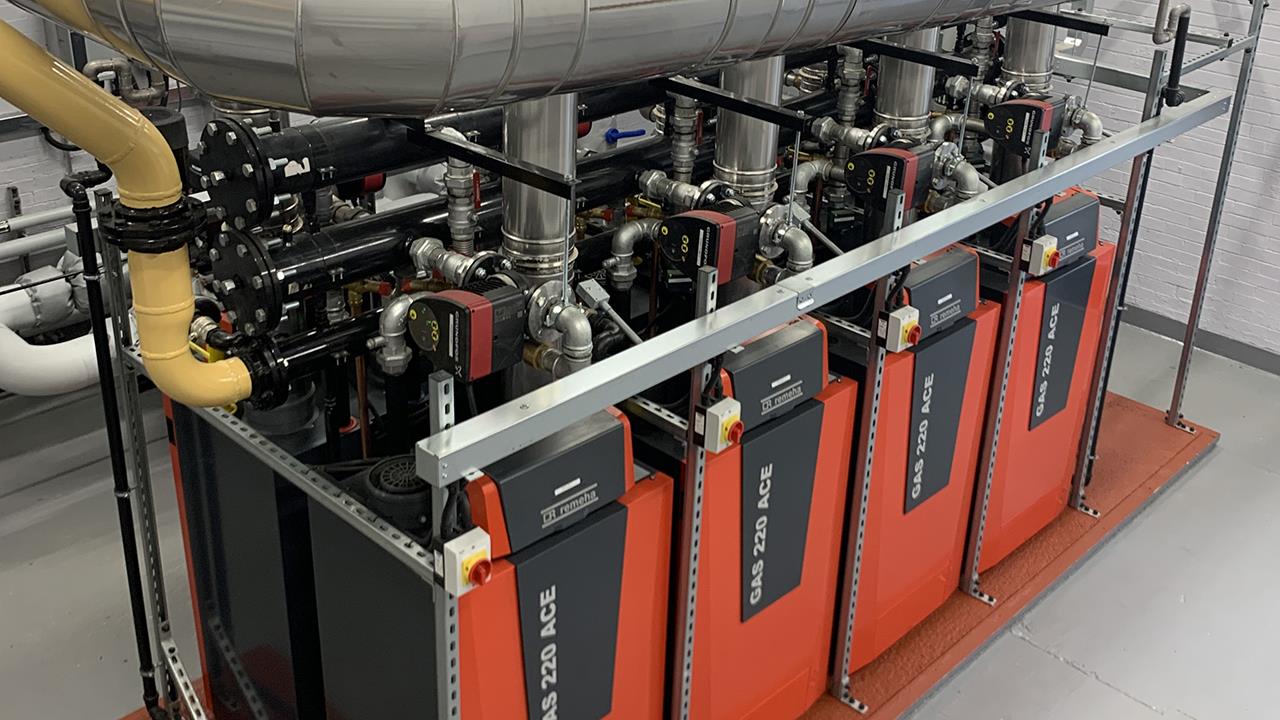

Use of prefabrication, also known as off-site fabrication, is on the up, and not just in the world of construction. As performance targets for heating and hot water provision get stricter, modular prefabricated systems are gaining popularity as an efficient, high quality solution to meet all project requirements.
Providing an efficient, modern heating and hot water system can be far from straightforward in certain buildings and sites. But prefabricated modules can be purpose-designed to overcome the challenges, making installation simpler, faster, and more efficient.
It is also worth noting that off-site fabrication can reduce waste, leading to a lower environmental impact.
And the best part is that this technique can be used for the full range of applications, from the largest containerised plant rooms to single boiler systems within existing buildings.
Prefab process
So, how does the process work? Working with contractors, specifiers, and the customer, experienced manufacturers will design and build the prefabricated modules to meet all the requirements of a project.
Each prefabricated module is typically designed using BIM tools and 3D computer-aided design (CAD) modelling to support best practice design, installation, operation, and future maintenance.
A further benefit of this process is that the design can address future plans and ensure that the full programme runs smoothly. For example, if air source heat pumps are to be integrated in the next phase of a refurbishment project, this is the perfect time to consider a prefabricated interface unit between the technologies, or the exact siting of the heat pump.
Once the final design has been approved, production takes place in a quality-controlled factory environment. Thanks to the use of specialist machinery, improved control procedures, and end-of-line testing, the highest quality can be achieved.
Furthermore, factory-assembled solutions are pre-tested for peace of mind, and come ready for installation and immediate commissioning if required.
Overcoming project challenges
It is essential, however, to plan ahead so that individual requirements and limitations can be identified and resolved, and the best possible outcome achieved.
Take space, a frequent challenge in a project. Through prefabrication, best use can be made of available spaces, whether in small, hard-to-access basements or full rooftop-packaged plant rooms.
On boiler replacement projects, for example, a prefabricated rig can be designed to split into smaller modules for easy access, with simple reconnection within the plant room into a single frame.
Safety is also improved when using prefabricated solutions as they remove the need for on-site hot works, such as welding. Taking it all off-site also reduces the number of workers, skills, and time required on-site, helping address the skills shortage.
The flexibility of the design means that on older heating systems, specially-sized plate heat exchangers and air/dirt separators can be integrated into a boiler rig, with matched boiler pumps, to optimise the lifetime operation of the new boilers. The rig can also be designed with integrated controls to maximise seasonal efficiency for lower running costs.
Experienced manufacturers will prepare all the design work, including sizing the pumps and low loss header or plate heat exchanger for site requirements. Even the position and size of the system connections on the rig can be made to match the existing system pipework for easy connection.
While the plug-and-play heating solution is being fabricated in the factory environment, contractors and installers can forge ahead with preparatory work to speed up installation or use the time to complete other projects.
On time, on budget
Off-site fabrication also offers the opportunity to relocate the heating and hot water services, making containerised packaged plant rooms an increasingly popular option.
These systems integrate the heat source – any combination of boilers, heat pumps, combined heat and power units, and gas-fired water heaters – with pumps, controls, and accessories, such as a dosing pot and pressurisation unit.
Packaged solutions can be designed in sections or as a single lift, depending on the site requirements, for straightforward transportation, accurate positioning, and easier installation.
With one point of contact, the potential for delay is greatly reduced, helping keep the project on schedule while avoiding any last-minute hitches due to product availability.
This approach also enables just-in-time delivery, removing the need to store equipment on-site, and simplifying site management.
Keeping it simple
Whether planning a complete plant room installation, refurbishing a heating system, or carrying out a boiler replacement, prefabrication makes everything easier for the contractor, while providing assurance of a high quality result.
Improved efficiency and sustainability, enhanced productivity through valuable on-site time and labour savings, increased on-site safety, and ensured quality control; modular prefabrication ticks all the boxes.
If you'd like to keep up-to-date with the latest developments in the heating and plumbing industry, why not subscribe to our weekly newsletters? Just click the button below and you can ensure all the latest industry news and new product information lands in your inbox every week.